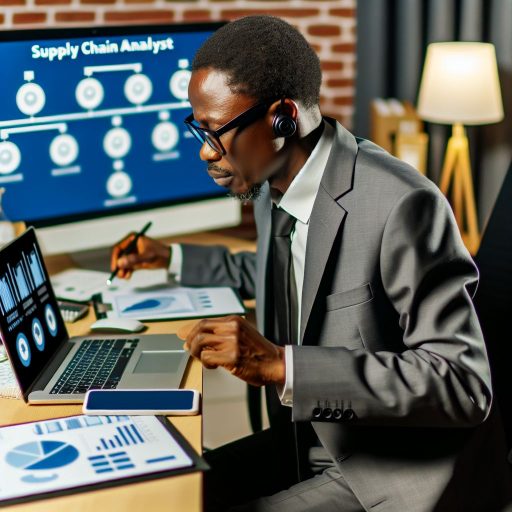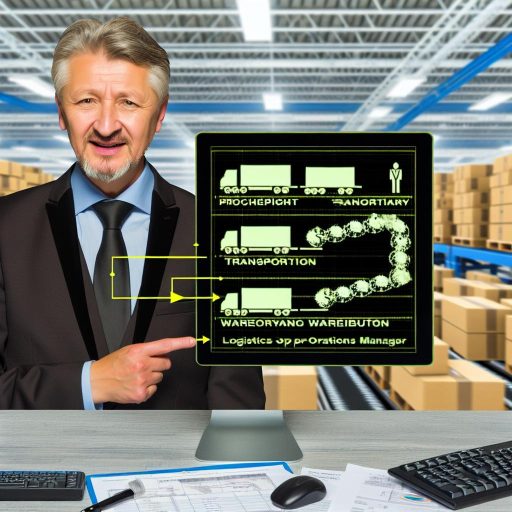Introduction:
Transportation planning involves designing, operating, and managing transportation systems to efficiently move people and goods.
In modern times, technology plays a crucial role in shaping transportation infrastructure and services.
With the rapid advancement of technology, transportation planning has evolved to incorporate innovative solutions for improving efficiency, safety, and sustainability.
This has led to a paradigm shift in how transportation systems are planned and managed.
Importance of Technology in Transportation Planning:
Technology has revolutionized the way transportation systems operate by providing real-time data, connectivity, and automation.
These advancements have enabled transportation planners to make informed decisions and optimize resources for better outcomes.
The integration of technology in transportation planning has also enhanced safety measures, reduced congestion, and minimized environmental impact.
This has resulted in more efficient transportation networks that cater to the needs of a growing population.
Thesis Statement:
Technology plays a pivotal role in modern transportation planning by enabling the implementation of smart solutions, data-driven strategies, and sustainable practices.
It is essential for creating resilient and adaptable transportation systems that can meet the needs of a rapidly changing world.
Historical perspective:
- Evolution of transportation planning
- Previous methods used for traffic management
- Introduction of technology and its impact on transportation planning
Transportation planning has evolved significantly over the years.
It has transitioned from simple road networks to sophisticated systems that incorporate technology.
The early days of urban planning focused on laying out roads.
Planners ensured roads could accommodate the increasing number of vehicles.
Traffic management was based on manual controls like signaling and traffic police.
These methods were used to regulate the flow of vehicles.
Evolution of transportation planning:
As cities grew larger, traffic congestion became a significant issue.
Transportation planners began to explore more advanced methods for managing traffic flow.
The advent of technology played a crucial role in this evolution.
Computerized systems for traffic signal coordination were introduced.
Transform Your Career Today
Unlock a personalized career strategy that drives real results. Get tailored advice and a roadmap designed just for you.
Start NowDynamic message signs and real-time traffic monitoring were also adopted.
Previous methods used for traffic management:
Before the widespread use of technology in transportation planning, traffic management relied heavily on manual intervention.
Traffic engineers would analyze traffic patterns.
They adjusted signal timings manually to optimize traffic flow.
While this method was effective to some extent, it was time-consuming.
It was not always efficient.
Introduction of technology and its impact on transportation planning:
The introduction of technology in transportation planning has revolutionized traffic management.
Advanced systems like Intelligent Transportation Systems (ITS) emerged.
These systems use sensors, cameras, and data analytics.
They collect real-time traffic information.
This information is communicated to traffic management centers.
This data empowers transportation planners to make informed decisions.
The goal is to improve traffic flow and reduce congestion.
This ultimately enhances overall transportation efficiency.
The role of technology in transportation planning has been transformative.
Systems are now more sustainable and efficient.
These advancements benefit both commuters and the environment.
Data collection and analysis:
- Use of sensors and cameras for traffic monitoring
- GPS tracking for real-time data
- Software applications for traffic flow analysis
Gone are the days when transportation planning relied solely on manual data collection techniques.
Today, advancements in technology have revolutionized the way data is collected and analyzed to improve traffic management and urban planning.
Let’s delve into the role of technology in data collection and analysis for transportation planning.
Transform Your Career Today
Unlock a personalized career strategy that drives real results. Get tailored advice and a roadmap designed just for you.
Start NowUse of sensors and cameras for traffic monitoring
One of the key technologies in modern transportation planning is the use of sensors and cameras for traffic monitoring.
Sensors installed on roads can detect vehicle movement, count traffic flow, and monitor speeds.
These real-time data insights are invaluable for planners to identify congestion hotspots, optimize traffic signal timings, and improve overall traffic flow in urban areas.
GPS tracking for real-time data
Another powerful tool in transportation planning is GPS tracking.
With the proliferation of smartphones and GPS-enabled devices, it is now easier than ever to track the movement of vehicles in real-time.
This data can provide valuable insights into travel patterns, route preferences, and traffic volume.
Planners can use this information to optimize public transportation routes, adjust traffic patterns, and enhance overall efficiency in urban mobility.
Software applications for traffic flow analysis
Advancements in software applications have also played a crucial role in traffic flow analysis.
These applications can process vast amounts of data collected from sensors, cameras, and GPS tracking systems to generate actionable insights.
Planners can use traffic simulation models to forecast traffic patterns, evaluate the impact of new infrastructure projects, and make informed decisions to improve transportation efficiency.
Additionally, these applications can help in predicting traffic congestion, recommending alternative routes, and enhancing overall transportation planning strategies.
The role of technology in data collection and analysis for transportation planning cannot be understated.
The use of sensors, cameras, GPS tracking, and software applications has enabled planners to make data-driven decisions, optimize traffic flow, and enhance urban mobility.
By harnessing the power of technology, transportation planning can adapt to the evolving needs of modern cities and create more sustainable and efficient transportation systems for the future.
See Related Content: Pros and Cons of Being a Warehouse Associate
Traffic Management:
One of the key aspects of transportation planning is traffic management.
In order to keep traffic flowing smoothly and efficiently, technologies play a crucial role in helping to optimize the use of roadways.
Intelligent traffic signals are being implemented in many cities to improve traffic flow.
These signals are equipped with sensors and cameras that can detect the volume of traffic in real-time.
This capability allows them to adjust signal timing accordingly to reduce congestion and minimize delays.
Transform Your Career Today
Unlock a personalized career strategy that drives real results. Get tailored advice and a roadmap designed just for you.
Start NowDynamic routing through GPS navigation systems is another technology that is revolutionizing transportation planning.
By using GPS data, drivers can receive real-time traffic information and be rerouted to less congested routes.
This ultimately saves time and fuel.
Smart parking solutions are also being utilized to reduce congestion in urban areas.
By using sensors and mobile apps, drivers can easily locate available parking spots.
This reduces the time spent circling around looking for parking and, thus, decreases traffic congestion.
Overall, the implementation of these technologies in traffic management is essential in improving the efficiency and sustainability of transportation systems.
This leads to a better overall experience for commuters and reduces the environmental impact of congestion.
- Implementation of intelligent traffic signals
- Dynamic routing through GPS navigation
- Smart parking solutions to reduce congestion
Explore Further: Key Skills Needed to Become a Traffic Manager
Environmental impact:
Integration of technology to reduce carbon emissions.
Electric vehicles and hybrid technology.
Urban planning with sustainability in mind.
Integration of technology to reduce carbon emissions
In transportation planning, technology plays a crucial role in reducing carbon emissions.
By utilizing smart traffic management systems, real-time data analytics, and intelligent transportation solutions, cities can optimize traffic flow.
This reduces congestion and ultimately lowers carbon emissions.
These technologies help in monitoring and managing traffic density.
They also implement dynamic tolling systems and promote the use of public transportation.
Electric vehicles and hybrid technology
The adoption of electric vehicles and hybrid technology is a significant step towards reducing the environmental impact of transportation.
By integrating these eco-friendly vehicles into transportation planning, cities can lower their carbon footprint.
This promotes sustainable mobility options.
Transform Your Career Today
Unlock a personalized career strategy that drives real results. Get tailored advice and a roadmap designed just for you.
Start NowImplementing charging infrastructure, offering incentives for electric vehicle owners, and integrating electric buses into public transportation fleets are some strategies.
Urban planning with sustainability in mind
When it comes to transportation planning, urban planners are increasingly focusing on designing sustainable and eco-friendly cities.
By incorporating green infrastructure, pedestrian-friendly pathways, and bike lanes into urban planning, cities can encourage walking and cycling.
This also includes the use of public transportation.
Additionally, sustainable urban design elements such as green spaces and energy-efficient buildings contribute to reducing the environmental impact of transportation.
These elements promote a healthier living environment for residents.
See Related Content: How to Become a Certified Logistics Technician
Safety is a paramount concern in transportation planning.
Technology plays a crucial role in ensuring the safety of commuters.
It also improves overall transportation systems.
In this section, we will discuss some of the safety measures.
Safety measures:
- Collision detection systems in vehicles
- Surveillance cameras for monitoring roads
- Emergency response systems integrated with transportation
One of the key technological advancements in transportation safety is the development of collision detection systems in vehicles.
These systems utilize sensors and cameras to detect potential collisions.
They warn drivers to take evasive actions.
In some advanced systems, the vehicle can even automatically apply brakes to avoid accidents.
Collision detection systems in vehicles
Surveillance cameras are another essential technology used in transportation planning.
These cameras enhance safety by being strategically placed along roads.
They monitor traffic conditions and detect accidents.
Additionally, they identify congestion points.
This real-time data helps transportation authorities respond quickly.
Transform Your Career Today
Unlock a personalized career strategy that drives real results. Get tailored advice and a roadmap designed just for you.
Start NowIt is used to manage traffic flow efficiently.
Surveillance cameras for monitoring roads
Integrating emergency response systems with transportation infrastructure is a game-changer.
It significantly improves safety measures.
By incorporating communication protocols and technologies, emergency responders can swiftly locate individuals.
They can assist individuals in distress during transportation emergencies.
This integration ensures a rapid and coordinated response to incidents.
It minimizes potential risks and saves lives.
Emergency response systems integrated with transportation
Safety measures in transportation planning are significantly enhanced.
This is due to the integration of technology-driven solutions.
Examples include collision detection systems and surveillance cameras.
Moreover, emergency response systems contribute to this safety enhancement.
These advancements improve commuter safety.
They optimize transportation systems for better efficiency and reliability.
It is imperative for transportation authorities to continue leveraging technology.
This effort will create safer and more resilient transportation networks for the future.
You Might Also Like: How to Optimize Your Supply Chain Management Strategy

Public transportation integration:
Public transportation plays a crucial role in the overall transportation planning of a city or region.
With the advancements in technology, integrating public transportation systems has become more efficient and convenient for commuters.
Mobile apps for route planning:
- One of the key technological innovations in transportation planning is the development of mobile apps for route planning.
- These apps allow users to input their starting point and destination, and then provide the most efficient route using public transportation options.
- Users can also customize their preferences, such as minimizing transfers or walking distance, to tailor the route based on their needs.
Real-time updates on bus and train schedules:
- Another benefit of technology in transportation planning is the ability to provide real-time updates on bus and train schedules.
- Commuters can access these updates through mobile apps or websites, allowing them to plan their journeys more effectively.
- By knowing the exact arrival and departure times of public transportation vehicles, commuters can minimize wait times and optimize their travel schedules.
Smart ticketing systems for seamless travel experience:
- Smart ticketing systems have revolutionized the way people pay for and access public transportation services.
- With options such as contactless payment, mobile tickets, and smart cards, commuters can have a seamless travel experience.
- These systems not only make it easier for commuters to pay for their trips but also help transportation authorities track usage data and optimize service routes.
The integration of technology in public transportation has greatly improved the overall travel experience for commuters.
From route planning to real-time updates and smart ticketing systems, technology plays a vital role in enhancing the efficiency and convenience of public transportation services.
Transform Your Career Today
Unlock a personalized career strategy that drives real results. Get tailored advice and a roadmap designed just for you.
Start NowFuture trends in transportation planning
– Autonomous vehicles and their impact
– Hyperloop and other innovative transportation technologies
– Predictive analytics for demand forecasting
Autonomous vehicles and their impact
Autonomous vehicles, also known as self-driving cars, are revolutionizing the transportation industry.
These vehicles use a combination of sensors, cameras, and artificial intelligence to navigate roads without human intervention.
One major impact of autonomous vehicles on transportation planning is the potential to reduce traffic congestion and accidents.
With precise communication and coordination, these vehicles can optimize traffic flow and reduce the risk of collisions.
Additionally, autonomous vehicles have the potential to improve accessibility for people with disabilities and the elderly.
These populations may have limited mobility options, and self-driving cars can provide a safe and convenient way to travel.
However, there are challenges to overcome before autonomous vehicles can be fully integrated into transportation systems.
These include regulatory hurdles, security concerns, and public acceptance.
Transportation planners must address these challenges to harness the full potential of autonomous vehicles.
Hyperloop and other innovative transportation technologies
Hyperloop is a cutting-edge transportation concept that proposes to transport passengers and cargo at high speeds through low-pressure tubes.
This technology has the potential to revolutionize long-distance travel by drastically reducing travel times.
In addition to Hyperloop, other innovative transportation technologies such as flying taxis, electric scooters, and vertical takeoff and landing (VTOL) aircraft are shaping the future of transportation planning.
These technologies offer sustainable and efficient alternatives to traditional modes of transport.
Transportation planners are exploring ways to integrate these innovative technologies into existing transportation systems.
By incorporating these solutions, cities can improve connectivity, reduce emissions, and enhance the overall transportation experience for residents and visitors.
Predictive analytics for demand forecasting
Predictive analytics involves using data and algorithms to forecast future trends and outcomes.
In transportation planning, predictive analytics plays a crucial role in predicting demand for transportation services and infrastructure.
Transform Your Career Today
Unlock a personalized career strategy that drives real results. Get tailored advice and a roadmap designed just for you.
Start NowBy analyzing historical data on passenger volumes, traffic patterns, and other relevant factors, transportation planners can make informed decisions about future investments and policies.
This enables effective resource allocation and infrastructure development to meet the evolving needs of a growing population.
Predictive analytics also allows transportation planners to optimize service schedules, routes, and modes of transport to maximize efficiency and minimize costs.
By leveraging data-driven insights, cities can enhance the overall performance of their transportation networks and improve the quality of life for residents.
Technology in Modern Transportation Planning
Technology plays a crucial role in modern transportation planning by providing data-driven insights.
Various software applications and analytics tools help in optimizing routes and schedules efficiently.
Real-time tracking systems enable better monitoring of vehicles, leading to improved fleet management.
With the use of GPS and mapping technology, transportation planners can identify traffic patterns.
Simulation tools allow testing different scenarios to predict the impact of proposed changes.
Data visualization tools help in presenting complex information in a more understandable format.
Automated systems streamline processes, enhancing overall system efficiency and reducing human errors.
Drones and autonomous vehicles are revolutionizing transportation planning by offering innovative solutions.
Embracing technology in transportation planning is essential for a sustainable future.
The benefits of technology include improved efficiency, cost-effectiveness, and enhanced decision-making processes.
However, challenges such as data security, implementation costs, and resistance to change need to be addressed.
Transportation stakeholders are encouraged to adopt and integrate technological advancements for a more sustainable and efficient transportation network.




